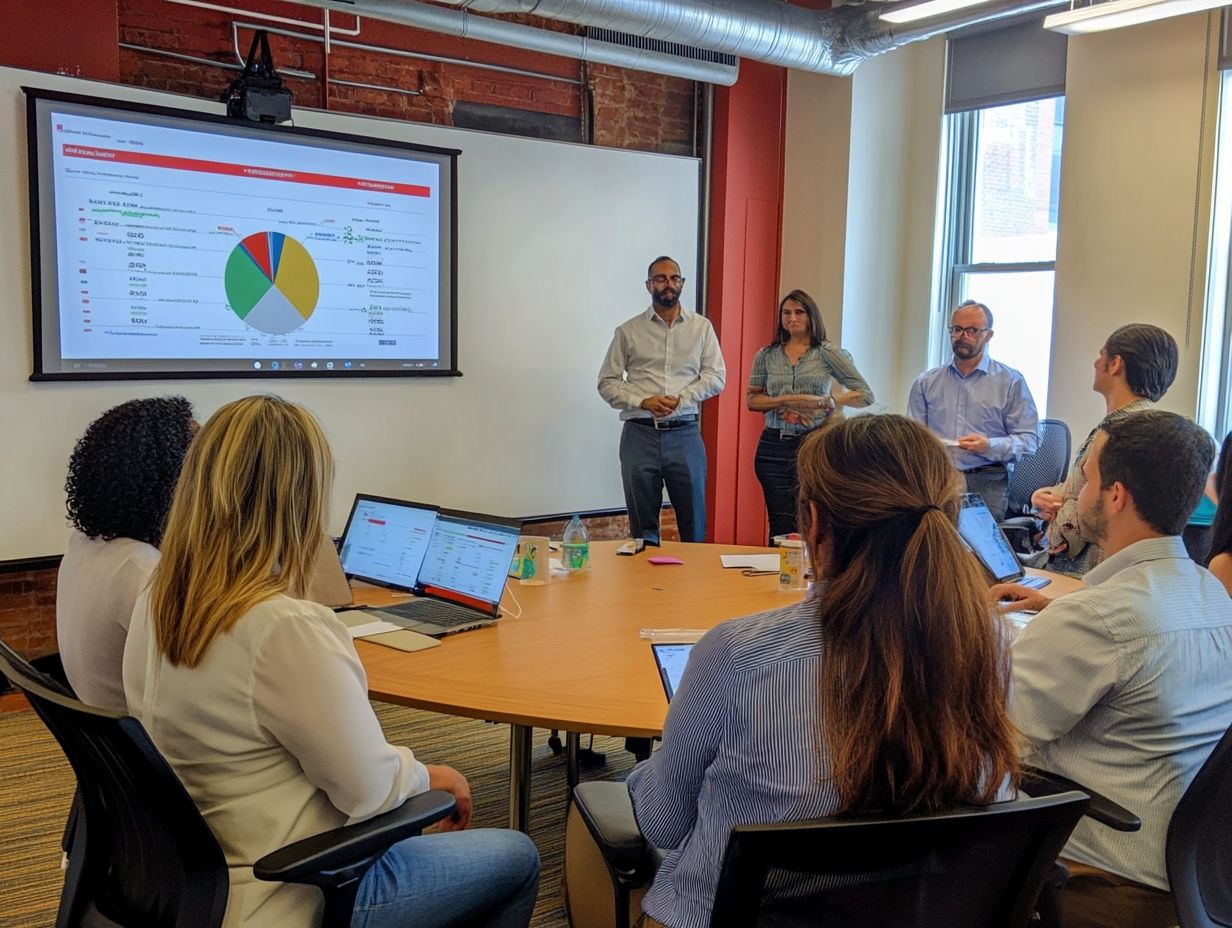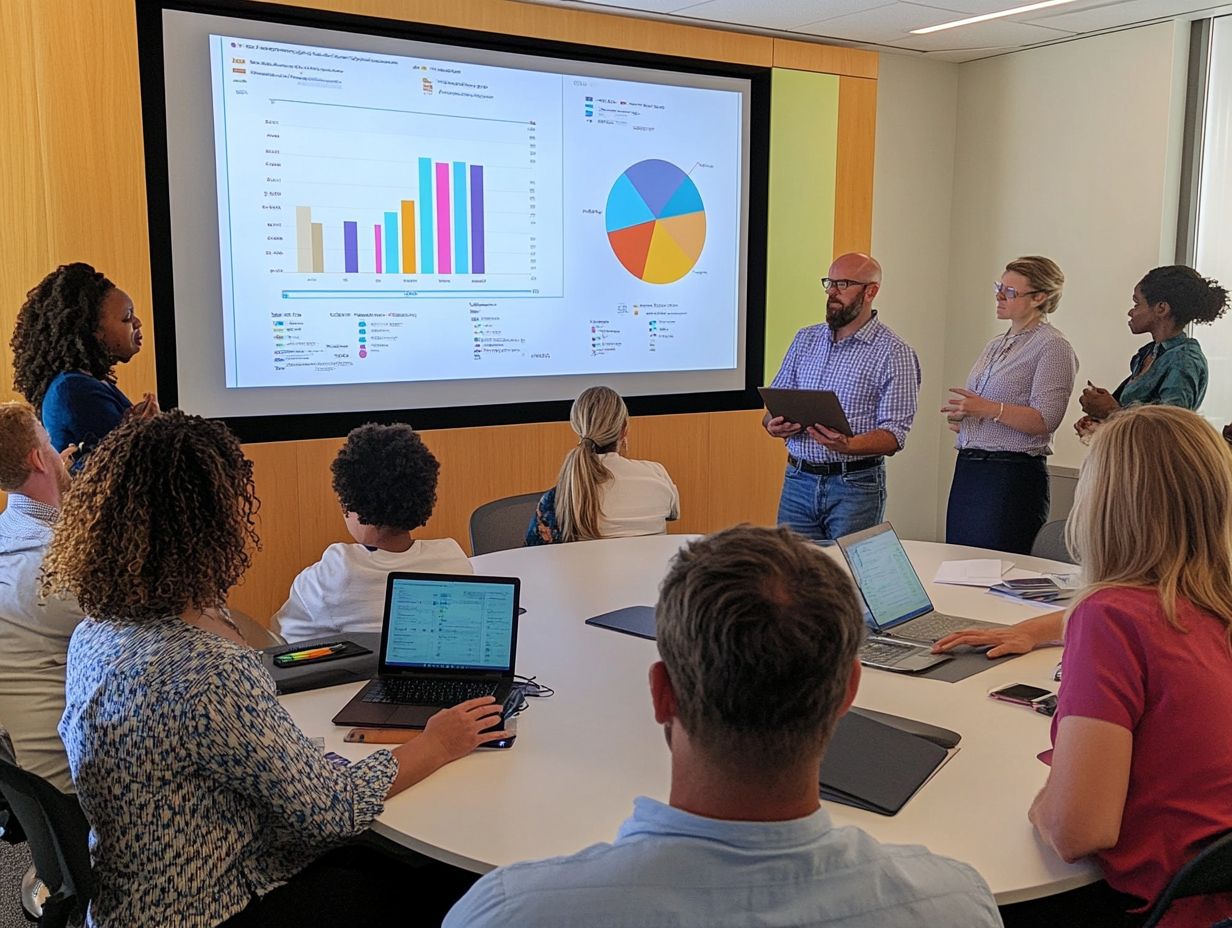Understanding the ROI of Skill Enhancement
In today s fast-paced world, enhancing your skills isn t just a luxury it s an absolute necessity.
Investing in your skill development can profoundly impact both your personal growth and the success of your organization. This article delves into the crucial factors for calculating the return on investment (ROI) for skill enhancement.
You ll explore strategies to maximize ROI and examine real-life case studies that highlight why skill development is a savvy investment. Dive in and discover how enhancing your skills can transform your career and boost your organization!
Contents
- Key Takeaways:
- The Importance of Skill Enhancement
- Calculating ROI for Skill Enhancement
- Maximizing ROI for Training Programs
- Case Studies on ROI of Skill Enhancement
- Future Trends in Skill Enhancement ROI
- Frequently Asked Questions
- Q1: What is the ROI of skill enhancement?
- Q2: How can understanding the ROI of skill enhancement benefit me?
- Q3: Can skill enhancement be measured in terms of ROI?
- Q4: What factors should be considered when calculating the ROI of skill enhancement?
- Q5: How can I track the ROI of skill enhancement?
- Q6: Is it worth investing in skill enhancement for career growth?
Key Takeaways:

The Importance of Skill Enhancement
Enhancing your skills is critical in today s fast-paced business environment, where adapting to market shifts and economic changes is essential. By investing in employee training and skills development, you not only boost engagement but also align with your organization s overall goals, securing a competitive edge in attracting and retaining top talent.
Embracing continuous improvement through targeted training programs can elevate customer satisfaction and increase workforce agility.
This ongoing effort ultimately steers your business toward sustainable success.
Why Investing in Skill Development Matters
Investing in skill development is essential for you and your organization, especially as the skills shortage continues to grow. It directly influences employee performance and ultimately determines your overall success.
By prioritizing training and development initiatives, you enhance your workforce’s capabilities while fostering a culture of continuous learning and improvement.
When employee performance increases, you ll often see higher job satisfaction, lower turnover rates, and a stronger competitive edge in today s fast-paced market. Proactively addressing skill gaps allows your organization to adapt smoothly to evolving industry demands and technological advancements.
To assess the effectiveness of your training programs, consider implementing measurements like employee feedback, performance assessments, and productivity tracking. Making a financial commitment to employee development reflects your dedication to nurturing talent and sets the stage for achieving long-term success.
Calculating ROI for Skill Enhancement
Calculating the return on investment (ROI) for skill enhancement initiatives is crucial for understanding the financial impact of your training programs. By doing so, you ensure that your investment aligns seamlessly with the desired training outcomes and overarching organizational goals.
This clarity validates your efforts and empowers you to make informed decisions for your future success!
Factors to Consider

When evaluating the ROI of skill enhancement programs, you must consider a plethora of factors including indirect costs, employee turnover, and the alignment of training objectives with overall employee satisfaction.
These elements are critical in determining the genuine value derived from such initiatives. Indirect costs, like decreased productivity during training and potential disruptions in workflow, can significantly affect your organization s bottom line if overlooked.
High employee turnover can erode the benefits of your training investments; constantly onboarding new staff may dilute the effectiveness of skill enhancement.
Therefore, it s essential to establish well-defined training objectives that align with both your organizational goals and your employees’ aspirations.
By setting clear expectations, you can cultivate a more motivated workforce, leading to successful outcomes and an enhanced ROI.
Measuring the Impact
Measuring the impact of your training programs is essential for evaluating their effectiveness and ensuring they align seamlessly with organizational goals and employee development strategies.
To gain valuable insights, consider employing various methods for collecting data and feedback from your team. Tools like surveys, interviews, and focus groups can be instrumental in assessing the training experience.
Learning metrics such as completion rates, retention scores, and post-training assessments offer quantitative data that beautifully complements qualitative feedback. Performance evaluations also play a critical role, enabling managers to observe shifts in productivity and behavior after training.
By integrating multiple sources of feedback, you can develop a comprehensive understanding of how these initiatives contribute to individual growth. Furthermore, they enhance overall business performance.
Maximizing ROI for Training Programs
Maximizing ROI for your training programs is crucial. Implement cost-effective solutions and focus on adaptive learning strategies.
Deliver tangible benefits for both employees and your organization. This ensures everyone enjoys the rewards and drives success.
Strategies for Success
Effective training strategies are essential if you’re looking to improve employee retention and cultivate a performance-driven culture.
By implementing targeted training programs aligned with individual career aspirations, you foster a supportive environment where employees feel valued and invested in.
Consider incorporating mentorship opportunities, workshops, and continuous learning modules. These initiatives enhance skill sets and promote a sense of belonging among team members.
As employees see their growth recognized, their engagement levels increase, resulting in lower turnover rates. Prioritizing ongoing development sends a clear message of commitment to your workforce.
Case Studies on ROI of Skill Enhancement

Case studies examining the ROI of skill enhancement provide invaluable insights into how organizations have effectively rolled out training programs.
These real-world examples highlight the substantial outcomes of such initiatives, showcasing their ability to drive cost reductions and generate revenue.
Real-Life Examples and Results
Real-life examples of successful skill enhancement initiatives show how targeted training programs can lead to improved skills acquisition and elevated employee performance.
Take Deloitte, for instance. They have integrated continuous learning through their Deloitte University initiative, promoting collaboration among teams.
Starbucks offers another compelling example. Their emphasis on barista training nurtures interpersonal abilities, enabling employees to forge stronger connections with customers.
These training programs elevate morale and reveal a strong connection between skill development and enhanced customer satisfaction. Well-structured training profoundly influences organizational success.
Future Trends in Skill Enhancement ROI
As you navigate the evolving economic landscape, future trends in skill enhancement ROI will highlight the significance of harnessing training effectiveness. This approach optimizes your workforce and addresses emerging skills gaps.
Start improving your training programs today and witness the transformation in your team!
Predictions and Possibilities
Future predictions for skill enhancement ROI emphasize the need to integrate talent management practices. Focus on performance metrics and continuous improvement strategies in your employee development programs.
This focus reflects a sophisticated understanding that cultivating your workforce’s abilities requires strategic planning. As you strive for optimal performance, weaving these elements into your training ensures alignment with both your business objectives and your team’s aspirations.
Use data to identify skill gaps. Tailor learning paths to address these gaps, fostering a culture of accountability and growth. Continuous evaluation of training effectiveness is essential for quantifying the benefits of investing in human capital, ultimately enhancing employee engagement and retention.
Frequently Asked Questions

-
Q1: What is the ROI of skill enhancement?
A1: The ROI of skill enhancement refers to the benefits gained from investing in skill improvement.
-
Q2: How can understanding the ROI of skill enhancement benefit me?
A2: Knowing the ROI of skill enhancement empowers you to make smart choices about your skills, leading to personal and professional growth.
-
Q3: Can skill enhancement be measured in terms of ROI?
A3: Yes, skill enhancement can be measured by comparing the costs and time invested against the benefits gained.
-
Q4: What factors should be considered when calculating the ROI of skill enhancement?
A4: Consider the cost of training, time invested, potential salary increases, job opportunities, and personal satisfaction when calculating ROI.
-
Q5: How can I track the ROI of skill enhancement?
A5: Track your ROI by setting specific goals, monitoring your progress, and regularly evaluating the benefits gained from your skill enhancement efforts.
-
Q6: Is it worth investing in skill enhancement for career growth?
A6: Yes, investing in skill enhancement can significantly boost your career growth, increase marketability, and lead to higher job satisfaction. Don t wait! Start investing in your skill enhancement today to boost your career.






